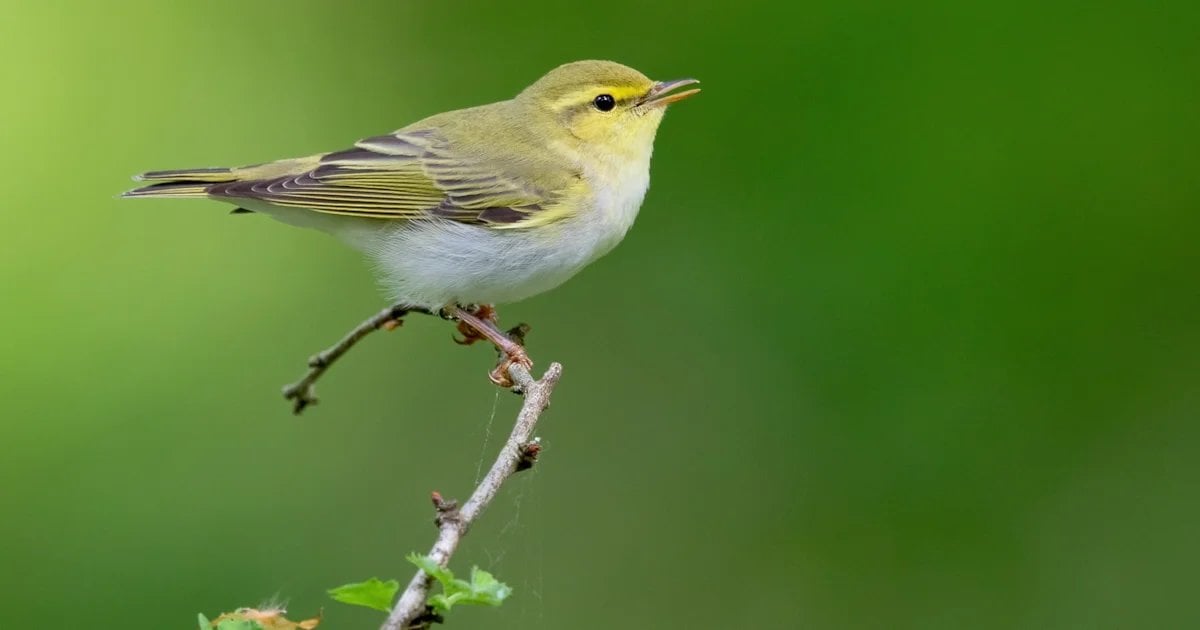The Devastating Effect Of Wildfires On Endangered UK Wildlife

Table of Contents
Habitat Destruction and Loss of Biodiversity
Wildfires cause catastrophic habitat destruction, leading to significant biodiversity loss across the UK. Vulnerable ecosystems, particularly peat bogs, heathlands, and ancient woodlands, are especially susceptible to the intense heat and flames. These habitats provide crucial food sources, shelter, and breeding grounds for a wide range of species, many of which are already endangered.
- Peat bogs: These vital ecosystems, home to species like the scarce chaser dragonfly and the large heath butterfly, are easily ignited and slow to recover, leading to extensive habitat loss and fragmentation. Wildfires destroy the unique flora and fauna, impacting the entire food web.
- Heathlands: The characteristic low-lying vegetation of heathlands, including heather and gorse, is highly flammable. Endangered species like the smooth snake and the sand lizard rely on these habitats for survival, and wildfires can decimate their populations.
- Woodlands: Wildfires can devastate ancient woodlands, destroying mature trees that provide essential nesting sites for birds like the red kite and the capercaillie. The loss of mature trees also impacts the entire ecosystem, reducing biodiversity and affecting the delicate balance of the forest floor.
The direct consequences of this habitat loss are dire:
- Adder: Loss of hibernation sites and foraging grounds leads to reduced survival and breeding rates.
- Pine marten: Destruction of forest habitat reduces food availability and suitable denning sites.
- Scottish wildcat: Habitat fragmentation isolates populations, increasing the risk of inbreeding and genetic decline.
Direct Mortality and Injury to Endangered Wildlife
Wildfires inflict immediate and devastating impacts on wildlife. The intense heat causes severe burns, smoke inhalation leads to respiratory problems, and many animals perish directly in the flames. The speed and intensity of wildfires often leave animals with little to no chance of escape.
- Rapid spread: The speed at which wildfires spread prevents many animals from reaching safety, leading to mass mortality events.
- Vulnerable young: Young animals and those with limited mobility are particularly vulnerable to the effects of wildfires.
- Long-term population impacts: Even if a species survives a wildfire, the loss of habitat and individuals can significantly reduce population size, making them even more vulnerable to extinction.
Specific endangered species are particularly susceptible to direct mortality:
- Birds: Many nesting birds are killed directly by the flames or perish from smoke inhalation.
- Reptiles and amphibians: These cold-blooded animals are slow-moving and have limited escape options.
- Mammals: Smaller mammals, like the water vole, are easily consumed by the flames.
The Role of Climate Change in Increasing Wildfire Risk
Climate change is a major driver behind the increasing frequency and intensity of wildfires in the UK. Rising global temperatures are creating hotter, drier conditions, increasing the flammability of vegetation and extending the wildfire season. Prolonged droughts further exacerbate the risk, leaving vegetation dry and easily ignited.
- Increased temperatures: Higher temperatures increase the risk of wildfires igniting and spreading rapidly.
- Prolonged droughts: Dry vegetation acts as fuel for wildfires, leading to more intense and widespread fires.
- Extreme weather events: More frequent and intense heatwaves and lightning strikes increase the likelihood of wildfire ignition.
- Human activities: Negligent land management practices, such as discarding cigarettes or campfires, also contribute to wildfire risk.
Addressing climate change is crucial to mitigating future wildfire risks and protecting endangered UK wildlife.
Conservation Efforts and Mitigation Strategies
Several conservation efforts are underway to protect endangered wildlife from the devastating effects of wildfires. These include:
- Habitat restoration: Restoration projects aim to rebuild and rehabilitate fire-damaged habitats, providing crucial refuges for endangered species.
- Firebreaks: Creating firebreaks – controlled gaps in vegetation – can help prevent the spread of wildfires.
- Prescribed burns: Controlled burns can reduce the fuel load in vulnerable areas, making them less susceptible to large, uncontrolled wildfires.
- Public awareness campaigns: Educating the public about wildfire prevention and responsible land management practices is crucial.
- Community involvement: Engaging local communities in wildfire prevention and response efforts is vital for effective protection.
Organizations such as the RSPB, the Wildlife Trusts, and the Forestry Commission play crucial roles in UK wildlife conservation and wildfire mitigation.
Conclusion
Wildfires pose a catastrophic threat to endangered UK wildlife, causing widespread habitat destruction, direct mortality, and long-term population declines. The increasing frequency and intensity of these events are directly linked to climate change, highlighting the urgent need for comprehensive action. We must support and strengthen conservation efforts, advocate for policies that address climate change, and engage in responsible land management practices to protect the UK's precious biodiversity from the devastating effects of wildfires. Learn more and get involved by supporting organizations like the [link to RSPB], the [link to Wildlife Trusts], and the [link to Forestry Commission]. Protecting endangered UK wildlife from wildfires requires collective action – let's work together to ensure the survival of these vulnerable species.

Featured Posts
-
 Scarlett Johansson Addresses Black Widows Mcu Comeback
May 13, 2025
Scarlett Johansson Addresses Black Widows Mcu Comeback
May 13, 2025 -
 Romska Gromada Ukrayini Rozpodil Naselennya Prichini Kontsentratsiyi Ta Aktualni Dani
May 13, 2025
Romska Gromada Ukrayini Rozpodil Naselennya Prichini Kontsentratsiyi Ta Aktualni Dani
May 13, 2025 -
 The Hobbit The Battle Of The Five Armies Plot Summary And Critical Reception
May 13, 2025
The Hobbit The Battle Of The Five Armies Plot Summary And Critical Reception
May 13, 2025 -
 Predlog Novele Zakona O Romski Skupnosti Porocilo Z Javne Obravnave
May 13, 2025
Predlog Novele Zakona O Romski Skupnosti Porocilo Z Javne Obravnave
May 13, 2025 -
 Elsbeth Season 2 Episode 18 Shocking Murder Rocks The Show
May 13, 2025
Elsbeth Season 2 Episode 18 Shocking Murder Rocks The Show
May 13, 2025
